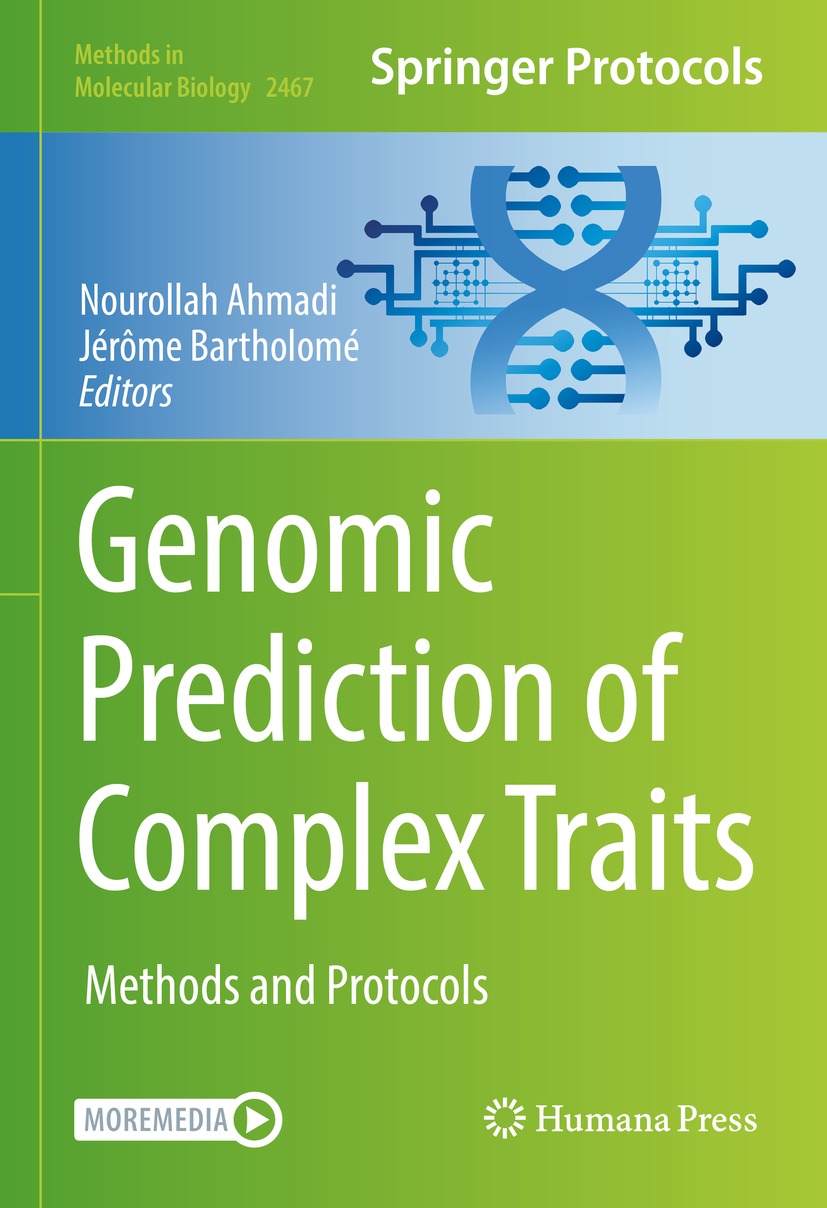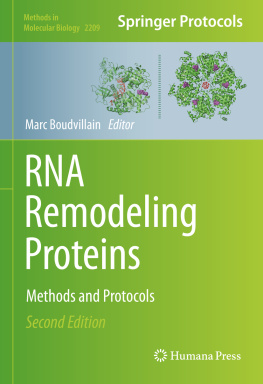Nourollah Ahmadi - Genomic Prediction of Complex Traits : Methods and Protocols
Here you can read online Nourollah Ahmadi - Genomic Prediction of Complex Traits : Methods and Protocols full text of the book (entire story) in english for free. Download pdf and epub, get meaning, cover and reviews about this ebook. publisher: Springer US, genre: Home and family. Description of the work, (preface) as well as reviews are available. Best literature library LitArk.com created for fans of good reading and offers a wide selection of genres:
Romance novel
Science fiction
Adventure
Detective
Science
History
Home and family
Prose
Art
Politics
Computer
Non-fiction
Religion
Business
Children
Humor
Choose a favorite category and find really read worthwhile books. Enjoy immersion in the world of imagination, feel the emotions of the characters or learn something new for yourself, make an fascinating discovery.
- Book:Genomic Prediction of Complex Traits : Methods and Protocols
- Author:
- Publisher:Springer US
- Genre:
- Rating:4 / 5
- Favourites:Add to favourites
- Your mark:
- 80
- 1
- 2
- 3
- 4
- 5
Genomic Prediction of Complex Traits : Methods and Protocols: summary, description and annotation
We offer to read an annotation, description, summary or preface (depends on what the author of the book "Genomic Prediction of Complex Traits : Methods and Protocols" wrote himself). If you haven't found the necessary information about the book — write in the comments, we will try to find it.
Genomic Prediction of Complex Traits : Methods and Protocols — read online for free the complete book (whole text) full work
Below is the text of the book, divided by pages. System saving the place of the last page read, allows you to conveniently read the book "Genomic Prediction of Complex Traits : Methods and Protocols" online for free, without having to search again every time where you left off. Put a bookmark, and you can go to the page where you finished reading at any time.
Font size:
Interval:
Bookmark:

For further volumes: http://www.springer.com/series/7651
For over 35 years, biological scientists have come to rely on the research protocols and methodologies in the critically acclaimed Methods in Molecular Biology series. The series was the first to introduce the step-by-step protocols approach that has become the standard in all biomedical protocol publishing. Each protocol is provided in readily-reproducible step-by-step fashion, opening with an introductory overview, a list of the materials and reagents needed to complete the experiment, and followed by a detailed procedure that is supported with a helpful notes section offering tips and tricks of the trade as well as troubleshooting advice. These hallmark features were introduced by series editor Dr. John Walker and constitute the key ingredient in each and every volume of the Methods in Molecular Biology series. Tested and trusted, comprehensive and reliable, all protocols from the series are indexed in PubMed.

Chapters 3, 9, 13, 14 and 21 are licensed under the terms of the Creative Commons Attribution 4.0 International License (http://creativecommons.org/licenses/by/4.0/). For further details see license information in the chapter.
This Humana imprint is published by the registered company Springer Science+Business Media, LLC, part of Springer Nature.
The registered company address is: 1 New York Plaza, New York, NY 10004, U.S.A.
Over the last three decades, steady progresses within the fields of molecular genetics and quantitative genetics have led to two major breakthroughs in genetics, genetic mapping and genomic prediction of complex traits of imperfectly known biological bases, with immense potential impact in the applied fields of human health and agriculture. The prospect of predicting human disease risks, and complex traits of agronomic interest with reasonably high precision, although they are difficult to evaluate or/and subject to numerous regulations and interactions, has stimulated public and private research. The aims included refining the theoretical bases of genomic prediction, extending its areas of application, fine-tuning the experimental designs for specific cases on different species of interest, and developing dedicated tools. Excitement over the development of methods for genomic prediction has not escaped the one around machine learning and artificial intelligence technologies. Results from various simulation works and empirical applications indicate that the quality of prediction depends on the interplay between a large number of factors, including relatedness between the reference and the candidate populations, trait architecture, optimal marker density, prediction methods, and, in the case of traits of agronomic interest, the overall organization of the plant and animal breeding programs. As the concepts and methods of genomic prediction of complex traits mature and are about to become the mainstream approach in dealing with an increasing number of health issues and objectives of animal and plant breeding, it is very timely to assemble the methodological achievements of the field in a volume of the series Methods in Molecular Biology.
This volume is composed of five sections. The first section (Chapter ) is dedicated to lessons learned from a number of applications of genomic prediction in the fields of human health, animal breeding, and plant breeding and to methods for analysis of the economic effectiveness of genomic selection relative to conventional breeding approaches.
As the objective of the volume is to provide a reference resource for students, teachers, practitioners, and for further methodological research, the chapters are designed to include practical examples, while reporting the latest state of knowledge in the field.
Font size:
Interval:
Bookmark:
Similar books «Genomic Prediction of Complex Traits : Methods and Protocols»
Look at similar books to Genomic Prediction of Complex Traits : Methods and Protocols. We have selected literature similar in name and meaning in the hope of providing readers with more options to find new, interesting, not yet read works.
Discussion, reviews of the book Genomic Prediction of Complex Traits : Methods and Protocols and just readers' own opinions. Leave your comments, write what you think about the work, its meaning or the main characters. Specify what exactly you liked and what you didn't like, and why you think so.













